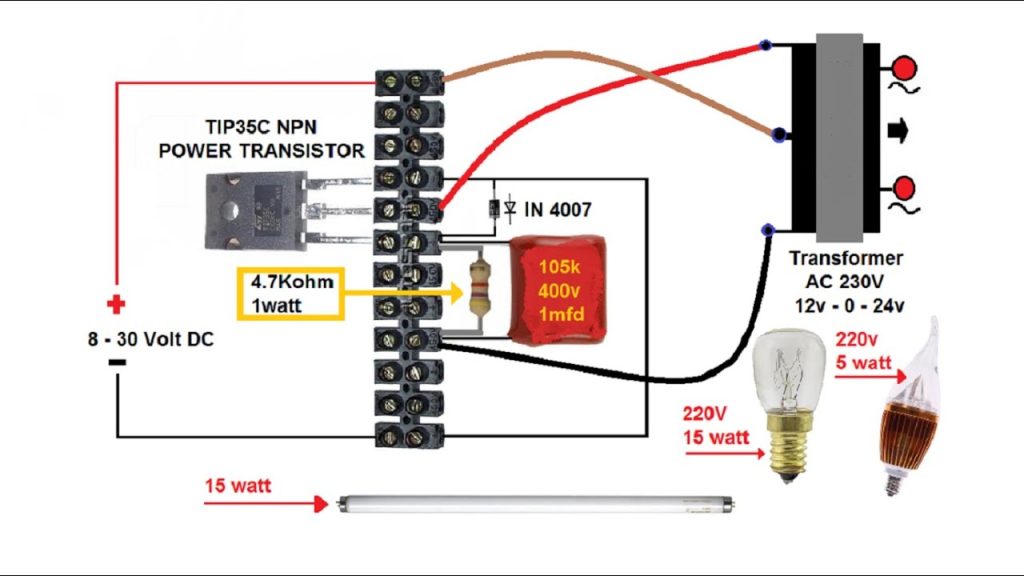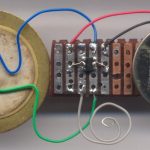how does a rectifier work in our previous article and know that a rectifier diode allows the conduction of electric current only in one direction. This unique characteristic of allowing conduction in a specific direction also results in the rectification of electric current if the source is an alternating current(AC). There are three configurations of a rectifier diode listed as follows but before discussing about the three configurations of rectifier it is important to first get a clear picture of alternating current.
1. Half wave
2. Full wave
3. Bridge
What is an Alternating Current (AC)?
As the name suggests the voltage in an AC constantly alters with time from zero to its positive peak and back to zero, again from zero to its negative peak and back to zero.
This process repeats itself number of times per second, depending upon its frequency (normally 50Hz in our domestic AC line).
Alternating current has several uses such as it can be stepped up or stepped down using a transformer plus it can be transmitted over long distances with low power loss, still quite often it is necessary to convert it to diect current. It can be converted into Direct Current( DC ) in the following three rectifier configurations.

Half-Wave Rectifier
This is the most basic design and utilizes only one rectifier diode. When an AC is introduced to its anode, the negative peaks are blocked and we get a positive voltage at the cathode and vice-versa if connections of the diode is reversed. This is called a half-wave rectifier because only one half of the AC cycle is converted into DC.
Since very few components are involved, the half wave rectifier circuit is very simple and economical but has significant drawbacks. Its efficiency is low, the output is full of ripples and hence large smoothing capacitors are required to get a clean DC. Due to DC magnetization and core saturation the transformer in a half-wave rectifier tends to get heated up within a very short time and they have to be also bigger in size.

Full-Wave Rectifier
In a full wave rectifier configuration, two diodes are used instead of one and since both halves of the AC cycle are transformed into DC it is known as a full-wave rectifier. This is a much improved version than the previous one. the output in this case is much fuller, low in ripple and relatively small value capacitors are needed to get a proper DC. But this type of rectifier circuit requires a center-tap transformer and the output voltage obtained is only half that of the total end to end voltage rating of the transformer.

Bridge-Rectifier
We know that bridge circuits are quite popular in electronics for various purposes and recently studied a Wheatstone bridge circuit for measuring the resistance of an unknown resistor where its value cannot be found by using the conventional resistor colour coding scheme. Now we shall study the use of a somewhat similar bridge circuit for achieving high efficiency and a much better rectification circuit.
A bridge rectifier is the best rectifier configuration than the previous two. A very smart interconnection of four diodes ensures a complete rectification without the use of center-tap transformer. The efficiency of this rectifier is high and the size of the transformer used is at least 1.5 times smaller than the full-wave configuration. The output voltage is equal or more ( under no load ) to the voltage rating of the transformer.

Building a Bridge Rectifier
You always wondered how to build a bridge rectifier, isn’t it? Its very easy, and may be done through the following three simple steps as shown in the diagrams:
· Take 4 rectifier diodes for example the 1N4007 rectiifer diodes,
· Pick two diodes, make a cross of their two ends marked with the white bands, twist them together tightly, solder the joint and cut off the protruding ends,
· Just as above do it for the remaining two diodes, this time with their ends having no bands,
· Now you have two sets of diode assemblies, simply twist and solder their free ends as shown in the figure.
· Your bridge rectifier is ready.
· The ends with the bands is the positive, the ends without the bands is the negative and the other two common ends are for the AC input supply.





